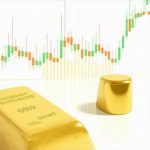Understanding the Gold Trading Landscape
In today’s volatile market, gold remains a steadfast investment choice for many. As global economic uncertainties rise, understanding how to navigate the gold trading landscape is essential for both novice and seasoned investors. With various investment vehicles available, including physical gold, gold stocks, and ETFs, it is crucial to explore each option’s advantages and risks.
Why Invest in Gold?
Gold has long been considered a safe haven asset, providing stability during turbulent economic periods. Investors often turn to gold to hedge against inflation and currency fluctuations. As you consider entering the gold market, it’s important to recognize the factors that influence gold prices, such as geopolitical events, interest rates, and supply-demand dynamics. For a comprehensive understanding of the current market, check out our article on latest developments in gold supply and demand dynamics.
Investment Vehicles for Gold
Investors can choose from several options when it comes to gold investments:
- Physical Gold: This includes gold bars, coins, and jewelry. While tangible, it requires secure storage and insurance.
- Gold ETFs: Exchange-traded funds offer a more liquid way to invest in gold without the need for physical storage. These funds track the price of gold and can be traded like stocks.
- Gold Mining Stocks: Investing in companies that mine gold can yield significant returns, especially when gold prices rise. However, these stocks are subject to company performance and operational risks.
Key Considerations When Trading Gold
As you embark on your gold trading journey, consider the following essential tips:
- Research Market Trends: Understand current gold price trends and forecasts to make informed decisions. For insights, read our article on current trends in gold price forecast.
- Assess Your Risk Tolerance: Gold trading can be volatile. Determine how much risk you are willing to take and choose your investment strategy accordingly.
- Diversify Your Portfolio: Don’t put all your eggs in one basket. Consider diversifying with gold mutual funds or ETFs to spread risk effectively. For more on this, see our guide on exploring the best physical gold investments.
Leveraging Expert Insights
Staying updated with expert analyses and market predictions can significantly enhance your trading strategy. Resources such as market analysis reports and investment blogs can provide valuable insights into emerging trends. For instance, our post on gold price analysis can help you better understand market movements and investment opportunities.
Incorporating these strategies into your approach to gold trading will prepare you to navigate the complexities of the market effectively. As you gain knowledge and experience, you’ll be better positioned to make strategic investment decisions that align with your financial goals.
Effective Strategies for Gold Trading
To thrive in the gold trading market, understanding effective strategies is vital. Whether you’re a seasoned investor or just starting, implementing well-thought-out tactics can significantly enhance your chances of success. One approach is to keep a close eye on gold price fluctuations, as these can be influenced by various factors including inflation rates, currency strength, and geopolitical tensions. For instance, our article on gold price predictions provides insights that can inform your trading decisions.
Technical Analysis in Gold Trading
Utilizing technical analysis is another powerful method in gold trading. By analyzing historical price charts and identifying patterns, you can make educated predictions about future price movements. Key indicators such as moving averages, RSI (Relative Strength Index), and Bollinger Bands can help you determine optimal entry and exit points. For a deeper understanding of these techniques, our guide on evaluating gold price volatility offers comprehensive insights.
Timing Your Investments
Timing your investments in gold can be crucial, as market conditions are often fluid. Keeping track of market news and economic indicators is essential to anticipate price movements. Additionally, understanding seasonal trends in gold demand can provide an edge. Historically, gold prices tend to rise during certain periods, such as around major holidays or during times of economic uncertainty. For those interested in future trends, our post on 2025 gold demand trends is worth exploring.
Utilizing Gold Mutual Funds
Investing in gold mutual funds is another effective strategy for those looking to diversify their portfolios without handling physical gold. These funds pool resources to invest in various gold-related assets, including mining stocks and ETFs. This approach can minimize risks while still providing exposure to gold’s potential upside. For insights on selecting the right funds, check out our article on exploring the best gold mutual funds.
Understanding Market Sentiment
Market sentiment also plays a significant role in gold trading. The emotional aspect of investing can lead to price swings, often driven by news reports or social media trends. Being aware of how market sentiment affects gold prices can help you make more informed trading decisions. To stay updated on these dynamics, consider reviewing our insights on latest insights on gold market analysis.
Leveraging Economic Indicators
Lastly, monitoring economic indicators such as employment rates, GDP growth, and inflation can provide valuable context for your gold investments. These indicators can influence investor confidence and, consequently, gold prices. As you navigate your investment strategy, our post on current factors influencing gold prices could be instrumental in shaping your approach.
Understanding the Role of Technical Indicators in Gold Trading
Technical indicators play a crucial role in gold trading by providing insights into market movements. By applying various analytical tools, investors can identify trends and potential entry and exit points. Some popular indicators include Fibonacci retracement levels, moving averages, and MACD (Moving Average Convergence Divergence). These tools help traders make data-driven decisions rather than relying solely on intuition.
Fibonacci Retracement Levels
Fibonacci retracement levels are used to predict potential reversal points in the market. Traders often look for these levels to identify areas where prices might bounce back. For instance, if gold prices decline, the retracement levels can highlight potential support zones. Understanding how to effectively use these levels can enhance your trading strategy. To delve deeper into trading strategies, check out our article on 5 effective strategies for successful gold trading.
Incorporating Fundamental Analysis in Gold Investment
While technical analysis focuses on price trends, fundamental analysis examines the underlying factors that drive gold prices. This includes economic data, geopolitical events, and central bank policies. For example, changes in interest rates can significantly impact gold’s attractiveness as an investment. When interest rates are low, gold becomes more appealing as a non-yielding asset, often driving prices higher.
Geopolitical Factors Influencing Gold Prices
Geopolitical tensions can create volatility in the gold market. Investors often flock to gold during times of uncertainty, such as conflicts or political instability. Understanding how global events affect gold prices can provide a competitive edge. Stay informed about significant geopolitical developments by reading our article on the impact of global events on gold market trends.
Creating a Personalized Gold Investment Strategy
Developing a personalized investment strategy is vital for success in gold trading. Consider your financial goals, risk tolerance, and investment timeline. A well-defined strategy should include diversification across different gold assets, such as ETFs, mining stocks, and physical gold. This approach can help mitigate risks while maximizing potential returns.
Utilizing Gold ETFs for Portfolio Diversification
Gold ETFs offer an excellent way to diversify your portfolio without the need for physical storage. These funds provide exposure to gold prices and often include a mix of gold mining stocks and physical gold holdings. For further insights on selecting the best gold ETFs for your needs, explore our guide on best tips for choosing gold ETFs in your portfolio.
Market Timing: Understanding Seasonal Trends in Gold
Market timing is essential in gold trading, particularly as seasonal trends can significantly influence prices. Historically, gold demand tends to rise during certain periods, such as the wedding season in India or during economic downturns. Monitoring these trends can help you identify opportune moments to invest. For insights on upcoming trends, read our article on 2025 gold demand trends.
Adapting Strategies to Market Conditions
The gold market is dynamic, and traders must be willing to adapt their strategies based on prevailing conditions. Whether the market is in a bullish or bearish phase, flexibility in your approach can help you capitalize on opportunities. Being aware of market sentiment and adjusting your tactics accordingly can enhance your trading efficacy.
By combining various analytical techniques, understanding market influences, and developing a personalized strategy, you’ll be better equipped to navigate the complexities of gold trading. As you refine your approach, consider exploring more detailed resources available on our site to deepen your understanding of the gold market.
Navigating the Challenges of Gold Trading
Gold trading, while lucrative, comes with its own set of challenges. Understanding these obstacles can help you develop a more resilient approach. For example, market volatility can lead to sudden price fluctuations, making it imperative to stay informed and agile. To enhance your knowledge on this topic, consider reading about evaluating gold price volatility strategies.
Market Sentiment and Its Impact
Market sentiment greatly influences gold prices. Positive or negative news can cause rapid shifts, so keeping a pulse on global events is crucial. For instance, economic reports or geopolitical tensions can prompt a rush to gold as a safe haven. Understanding how to interpret these signals can guide your trading decisions. For more on how such factors affect market dynamics, check out current factors influencing gold prices.
Importance of Diversification in Gold Investments
Diversification is a key principle in investment, and it holds true for gold as well. By spreading your investments across various gold assets—such as ETFs, mining stocks, and physical gold—you can mitigate risks while capitalizing on potential gains. This strategy ensures that if one investment underperforms, others may compensate for it. For insights on how to effectively diversify your gold portfolio, refer to our guide on strategic insights for diversifying with gold investments.
Utilizing Gold Futures for Strategic Advantage
Gold futures offer another layer of strategy for investors looking to hedge against price movements. By entering into futures contracts, traders can speculate on the future price of gold, which allows for profit even in declining markets. However, this approach requires a solid understanding of market trends and potential risks. To explore this further, read our article on understanding gold futures.
Monitoring Economic Indicators for Informed Decisions
Economic indicators, such as inflation rates and employment figures, can significantly impact gold prices. By monitoring these indicators, you can better anticipate market movements. For example, higher inflation often drives gold prices up as investors seek to hedge their purchasing power. Staying informed about these trends is crucial for making educated investment choices. To learn more about how these indicators can influence your strategy, check out our post on understanding the interplay of gold and inflation.
Keeping an Eye on Global Economic Trends
Global economic trends should also be part of your gold investment strategy. Events such as trade disputes, central bank policies, and international economic forecasts can create ripples in the gold market. Being proactive about these trends will enable you to position your investments advantageously. For a deeper dive into global influences on gold, read our article on the impact of global events on gold market trends.
Building a Long-term Gold Investment Strategy
Finally, a long-term investment strategy is crucial for success in gold trading. Rather than chasing short-term gains, focusing on a sustainable approach can yield better results over time. This involves setting clear financial goals, regularly reviewing your portfolio, and adjusting your strategies based on market conditions. For more tips on building a robust investment strategy, explore our comprehensive guide on how to build a robust gold investment portfolio.
Comprehensive FAQ Section on Gold Trading
What are the best strategies for trading gold?
The best strategies for trading gold include technical analysis, fundamental analysis, and keeping an eye on market sentiment. Utilizing tools like moving averages and Fibonacci retracement levels can help identify entry and exit points. Additionally, diversifying your investments across various gold assets such as ETFs, mining stocks, and physical gold can mitigate risks.
How does geopolitical tension affect gold prices?
Geopolitical tensions often lead to increased demand for gold as a safe haven investment. During times of uncertainty, investors flock to gold, driving prices up. Historical events, such as wars or financial crises, have shown that gold retains its value in turbulent times.
What are the risks involved in gold trading?
While gold trading can be profitable, it also comes with risks. These include market volatility, changes in economic indicators, and geopolitical events that can rapidly affect prices. Investors must conduct thorough research and remain informed about market trends to navigate these risks effectively.
Is it better to invest in physical gold or gold ETFs?
Investing in physical gold provides tangible assets, but it requires secure storage and insurance, which can be costly. Gold ETFs, on the other hand, offer liquidity and ease of trading without the need for physical storage. The choice ultimately depends on your investment goals and risk tolerance.
How can I track gold price trends?
To track gold price trends, you can use financial news websites, investment apps, and market analysis tools that provide real-time data. Keeping an eye on economic indicators, such as inflation rates and interest rates, is also essential, as these factors influence gold prices.
What are the advantages of investing in gold mining stocks?
Investing in gold mining stocks can yield significant returns, especially when gold prices rise. These stocks often outperform gold prices during bullish markets. However, they are subject to company performance and operational risks, making thorough research necessary before investing.
How often should I review my gold investment portfolio?
It is advisable to review your gold investment portfolio at least quarterly. Regular assessments allow you to adjust your strategies based on market trends, economic indicators, and your individual financial goals. Keeping your portfolio aligned with your investment strategy is crucial for long-term success.
What role do economic indicators play in gold trading?
Economic indicators such as inflation rates, employment figures, and GDP growth heavily influence gold prices. When inflation rises, gold often becomes more attractive as a hedge against declining purchasing power. Monitoring these indicators helps investors make informed trading decisions.
Can I invest in gold through retirement accounts?
Yes, you can invest in gold through retirement accounts, such as a self-directed IRA. This allows you to hold gold ETFs or physical gold in a tax-advantaged account. Ensure you understand the regulations and requirements for holding precious metals in retirement accounts.
Authority Resources for Gold Trading
For those looking to deepen their understanding of gold trading, several trusted resources can provide valuable insights:
- Kitco News – A leading source for gold market news and analysis.
- World Gold Council – Offers comprehensive research on gold’s role in investment and economics.
- Investing.com – Provides real-time gold prices and market trends.
- Bloomberg Commodities – An authoritative source for commodity news, including gold.
- Reuters Commodities – Offers up-to-date information and analysis on gold and other commodities.
Conclusion
In conclusion, navigating the complexities of gold trading requires a solid understanding of market dynamics, effective strategies, and a personalized investment approach. By leveraging both technical and fundamental analyses, staying informed about economic indicators, and diversifying your portfolio, you can enhance your chances of success in the gold market. Remember, as you develop your gold trading strategy, consistently revisit and refine your methods to align with changing market conditions. With the right tools and resources, you can confidently invest in gold and take advantage of its potential as a lucrative asset.










This article provides a comprehensive overview of the current gold trading landscape, which is incredibly helpful for both new and experienced investors. I particularly appreciate the emphasis on diversifying across physical gold, ETFs, and mining stocks, as I’ve found that a balanced approach can mitigate some of the market volatility risks. In my experience, keeping an eye on geopolitical events and economic indicators has also been crucial, especially during unpredictable times like today. I wonder, how do others here balance short-term trading strategies with long-term investment plans in such a fluctuating market? Personally, I try to stay informed through a mix of technical analysis and macroeconomic news, but I’d love to hear what tools or methods other investors rely on to stay ahead. Also, incorporating seasonal trends has been a game-changer for me, especially around major economic or political events. Would love to hear more insights or personal tricks that others use to optimize timing for their gold investments.